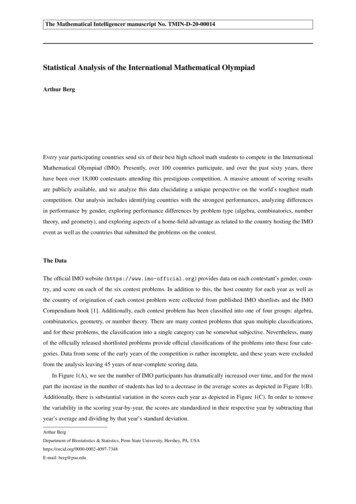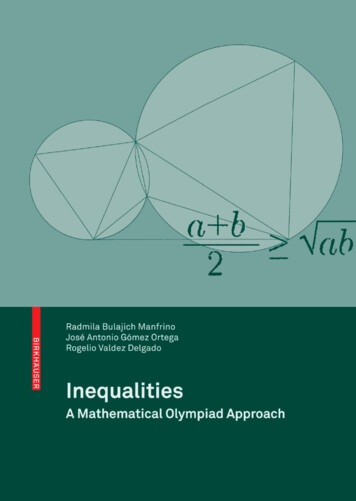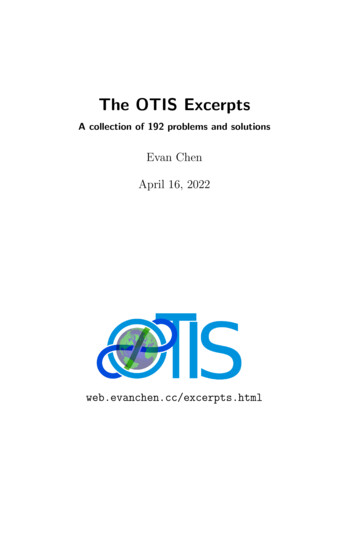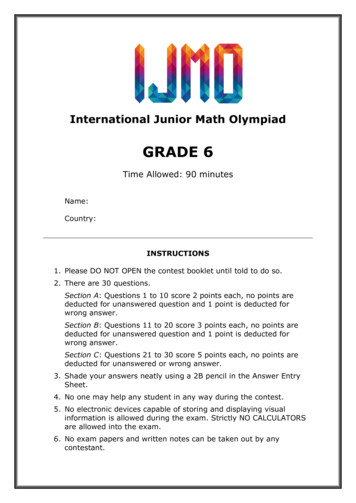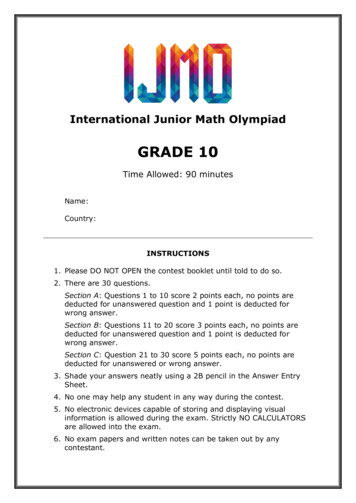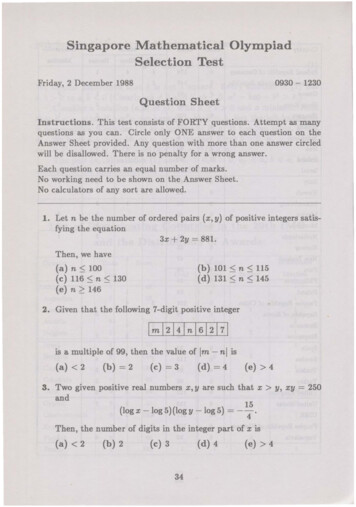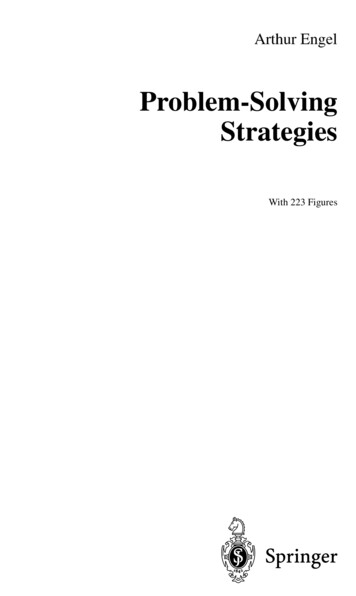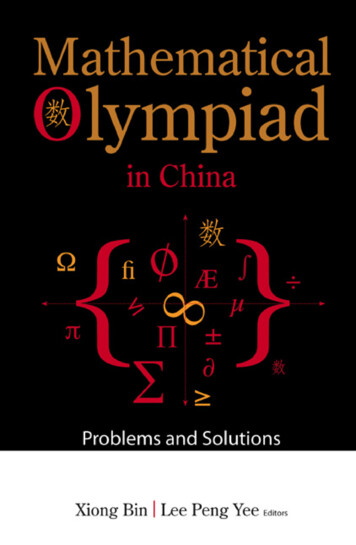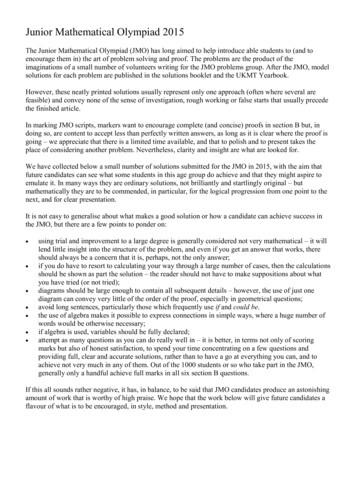
Transcription
Junior Mathematical Olympiad 2015The Junior Mathematical Olympiad (JMO) has long aimed to help introduce able students to (and toencourage them in) the art of problem solving and proof. The problems are the product of theimaginations of a small number of volunteers writing for the JMO problems group. After the JMO, modelsolutions for each problem are published in the solutions booklet and the UKMT Yearbook.However, these neatly printed solutions usually represent only one approach (often where several arefeasible) and convey none of the sense of investigation, rough working or false starts that usually precedethe finished article.In marking JMO scripts, markers want to encourage complete (and concise) proofs in section B but, indoing so, are content to accept less than perfectly written answers, as long as it is clear where the proof isgoing – we appreciate that there is a limited time available, and that to polish and to present takes theplace of considering another problem. Nevertheless, clarity and insight are what are looked for.We have collected below a small number of solutions submitted for the JMO in 2015, with the aim thatfuture candidates can see what some students in this age group do achieve and that they might aspire toemulate it. In many ways they are ordinary solutions, not brilliantly and startlingly original – butmathematically they are to be commended, in particular, for the logical progression from one point to thenext, and for clear presentation.It is not easy to generalise about what makes a good solution or how a candidate can achieve success inthe JMO, but there are a few points to ponder on: using trial and improvement to a large degree is generally considered not very mathematical – it willlend little insight into the structure of the problem, and even if you get an answer that works, thereshould always be a concern that it is, perhaps, not the only answer;if you do have to resort to calculating your way through a large number of cases, then the calculationsshould be shown as part the solution – the reader should not have to make suppositions about whatyou have tried (or not tried);diagrams should be large enough to contain all subsequent details – however, the use of just onediagram can convey very little of the order of the proof, especially in geometrical questions;avoid long sentences, particularly those which frequently use if and could be.the use of algebra makes it possible to express connections in simple ways, where a huge number ofwords would be otherwise necessary;if algebra is used, variables should be fully declared;attempt as many questions as you can do really well in – it is better, in terms not only of scoringmarks but also of honest satisfaction, to spend your time concentrating on a few questions andproviding full, clear and accurate solutions, rather than to have a go at everything you can, and toachieve not very much in any of them. Out of the 1000 students or so who take part in the JMO,generally only a handful achieve full marks in all six section B questions.If this all sounds rather negative, it has, in balance, to be said that JMO candidates produce an astonishingamount of work that is worthy of high praise. We hope that the work below will give future candidates aflavour of what is to be encouraged, in style, method and presentation.
Solution
Solution
Solution
Solution
Solution
Solution
B6 solution (continued)
Junior Mathematical Olympiad 2015 The Junior Mathematical Olympiad (JMO) has long aimed to help introduce able students to (and to encourage them in) the art of problem solving and proof. The problems are the product of the imaginations of a small number of volunteers writing for the JMO problems group. After the JMO, model



